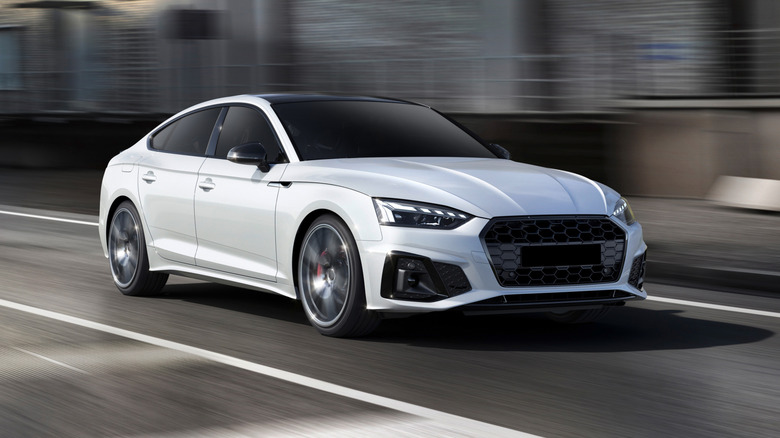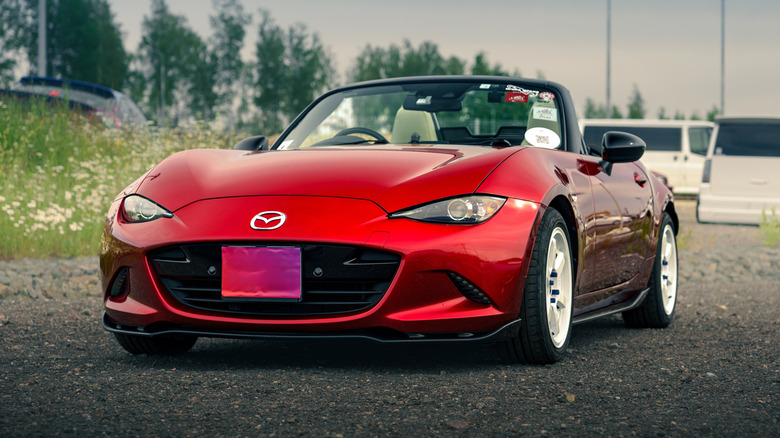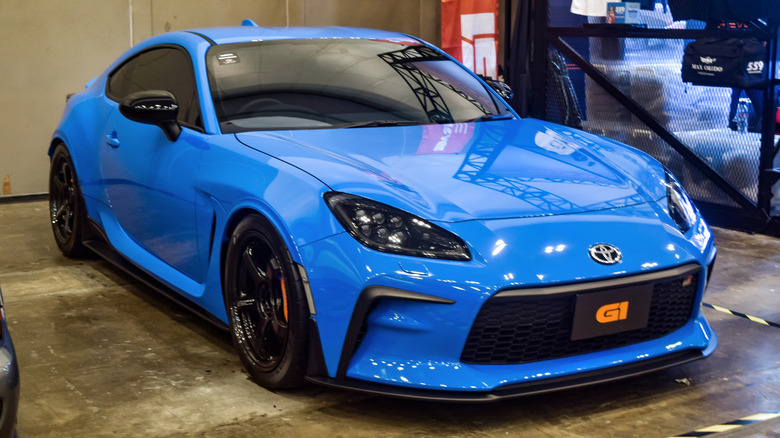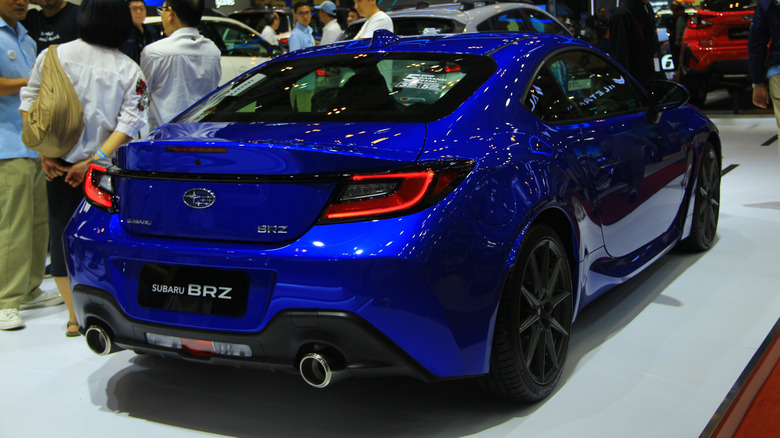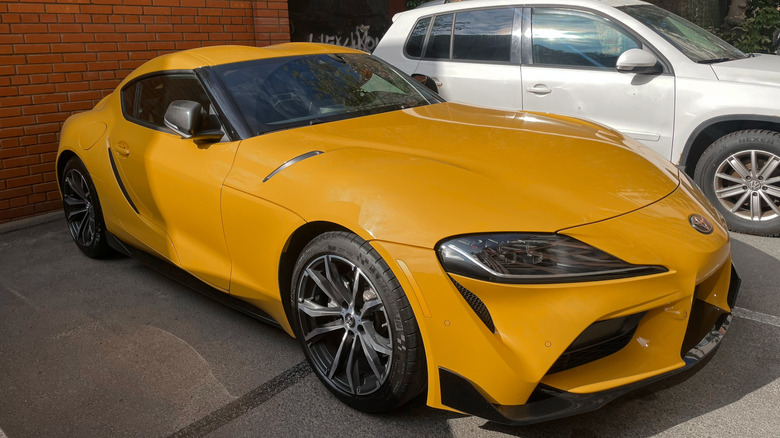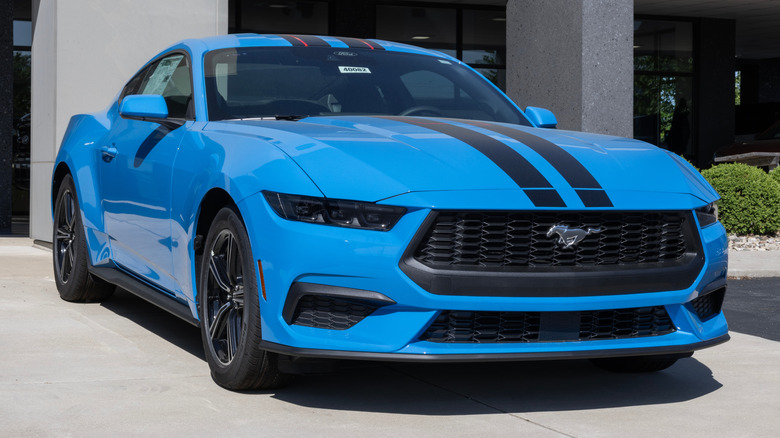5 Of The Best 2025 Sports Cars Less Than $50K, Ranked By Car And Driver
Sports cars don't always require a big budget. For drivers who want quick acceleration and sharp handling, Car and Driver's testing shows plenty of options that keep the price under $50,000. Their rankings are built on around 200 data points, including performance numbers, fuel economy, comfort, cargo space, and overall value. Each car is measured in ways that make comparisons fair and consistent, whether it's braking from 70 mph, cornering grip, or real-world highway fuel economy.
Testing goes far beyond stopwatch times. Vehicles are weighed, measured, and evaluated with precision tools like GPS-based data loggers, sound meters, and load scales. Acceleration tests cover everything from a standing start to rolling performance, while braking and skidpad runs highlight balance and grip. Editors also track fuel range at a constant 75 mph, record interior storage with standardized methods, and even measure outward visibility with specialized equipment. The result is a complete picture of how these cars perform in both controlled conditions and daily driving. Here are Car and Driver's top picks under $50K for 2025.
1. 2025 Mazda MX-5 Miata
The 2025 Mazda MX-5 Miata continues its run as one of the most accessible sports cars on the market. With a 2.0-liter four-cylinder producing 181 horsepower and a curb weight just over 2,300 pounds, the Miata is built for balance and lightness rather than raw output. A six-speed manual is the best way to experience it, though an automatic is available. Steering is sharp, the chassis is playful, and it manages to stay compliant enough for daily use. Modern features like Apple CarPlay, Android Auto, heated seats, and headrest speakers make the Miata easier to live with than its predecessors.
The combination of usability and fun in this vehicle reminds people of the Honda S2000, which remains a beloved choice among car enthusiasts. The S2000's naturally aspirated 2.0- or 2.2-liter engine revved as high as 9,000 rpm and delivered 237 horsepower. Combined with its six-speed manual and stiffer suspension, it was quicker and more aggressive than the Miata. The interior design of both cars matched, but the Honda cockpit design, together with its supportive seats, emphasized performance.
Where the Miata pulls ahead today is in convenience and availability. It offers better fuel economy (close to 30 mpg in mixed driving) and more tech, while the S2000's discontinued status makes parts harder to find. The Honda delivers more power and drama, but the Miata is more practical. Both nail the lightweight roadster formula, but the Miata's modern updates give it an edge as a daily driver.
2. 2025 Toyota GR86
The 2025 Toyota GR86 nails the essentials of a lightweight, rear-wheel-drive sports car. Powered by a 2.4-liter flat-four engine making 228 horsepower and 184 lb-ft of torque, the GR86 hits 60 mph in 5.4 seconds with the six-speed manual. The automatic version is slower, but still available for those who want it. Handling is sharp, the steering is direct, and the suspension balances agility with enough comfort to work as a daily driver. Fuel economy comes in at 20 mpg city and 27 highway with the manual, or slightly higher with the automatic.
For 2025, Toyota brings back the Hakone Edition. Limited to 850 units, it adds Ridge Green paint, bronze 18-inch wheels, Brembo brakes, and Sachs dampers, all based on the Premium trim. Inside, tan accents set it apart from the standard lineup. The Hakone also benefits from Toyota's broader updates this year, including retuned shocks, improved steering, and software tweaks to make rev-matching smoother in manual models.
Pricing starts at $31,595 for the base GR86, making it the cheapest Toyota sports car you can buy in 2025, while the Hakone sits near the top at $36,465. The interior is still tight in the back, with rear seats best suited for bags, but the front seating position and controls remain ideal for spirited driving. Standard features include an 8.0-inch touchscreen, Apple CarPlay, Android Auto, and a digital gauge cluster with Normal, Sport, and Track modes. Toyota also includes a free one-year National Auto Sport Association membership, giving buyers access to track events and driving programs.
3. 2025 Subaru BRZ
The 2025 Subaru BRZ keeps things simple: rear-wheel drive, a naturally aspirated engine, and a manual transmission that rewards driver input. Under the hood sits a 2.4-liter flat-four making 228 horsepower and 184 lb-ft of torque. Paired with a six-speed manual, it pushes the coupe to 60 mph in 5.5 seconds. An optional six-speed automatic is available, but enthusiasts will want the stick. A limited-slip differential comes standard, while trims range from the $34,380 Premium to the $39,530 tS, which adds upgraded brakes and a specially tuned suspension.
Handling is where the BRZ stands out. The chassis is light, and steering feedback is strong. Ride quality is firm but never harsh, keeping the car playful on backroads. New for 2025, all BRZs gain a Sport mode that sharpens throttle response. The Limited trim introduces more red interior accents, while the tS offers track-focused upgrades with Brembos and Hitachi dampers.
Fuel economy isn't class-leading, but it's respectable. Manuals are rated at 20 mpg city and 27 highway, while automatics climb to 21/30. In real-world testing, the BRZ delivered 32 mpg on the highway with a manual. Inside, it's a driver-first setup with a 7.0-inch digital gauge cluster and an 8.0-inch infotainment screen that supports Apple CarPlay and Android Auto. The 2+2 seating is more symbolic than useful, but folding the rear seats creates room for four tires, making it track-day ready. Few cars offer this mix of affordability and pure driving engagement.
4. 2025 Toyota GR Supra
For 2025, the Toyota GR Supra streamlines its lineup by dropping the four-cylinder option, leaving only the 382-horsepower turbocharged 3.0-liter inline-six. That's paired with either an eight-speed automatic or a no-cost six-speed manual, the latter bringing more engagement even if it adds a couple of tenths to the car's 0–60 mph time. C/D estimates 3.9 seconds with the automatic and just over four seconds with the manual, numbers that place it squarely among serious sports cars. Rear-wheel drive remains standard, and every Supra buyer also gets a complimentary high-performance driving event and a one-year membership to the National Auto Sport Association.
The Supra's chassis strikes a balance between daily comfort and sharp handling. Steering is direct and nicely weighted, while the adaptive suspension keeps the ride firm but forgiving. The short wheelbase can make the ride feel busy over rough pavement, yet the car remains controlled and responsive. Michelin Pilot Super Sport tires and Brembo brakes support track use without sacrificing road manners. With the manual, Toyota has addressed shifter feel with revised bushings and clutch tuning, making it more precise than many BMW equivalents. All of these make it increasingly reliable enough as a daily driver.
The interior design of the Supra borrows design elements from BMW for switchgear and infotainment systems, but Toyota implements its own design elements. The base model comes with an 8.8-inch display screen that supports Apple CarPlay and features a digital instrument cluster and JBL audio system as optional upgrades. The available power-adjustable seats provide sufficient support for most drivers to achieve comfort despite the limited space in the vehicle. The manual transmission version achieves 19 mpg city, while the automatic transmission model reaches 23 mpg city, which is suitable for a vehicle with 400 horsepower. The 2025 GR Supra begins at $57,445, lower than the Porsche 718 Cayman while offering similar performance.
5. 2025 Ford Mustang
The Ford Mustang enters 2025 with its seventh generation intact and no shortage of variety. Buyers can choose between the turbocharged 2.3-liter EcoBoost four-cylinder or the 5.0-liter Coyote V-8, with outputs ranging from 315 to 500 horsepower. A 10-speed automatic is standard on most trims, though the GT and Dark Horse models can be had with a six-speed manual. At the top of the lineup sits the new GTD, a limited-production model with a supercharged 5.2-liter V-8 making over 800 horsepower, aimed squarely at European track machines.
Performance remains Mustang's strong suit. A GT with the performance exhaust hits 60 mph in 4.2 seconds, while the EcoBoost trails only slightly at 4.5. The Dark Horse cuts that time to 4.1 seconds and feels sharper thanks to adaptive dampers and optional track tires. Handling is more refined than in past generations, with improved steering feel and composure over rougher pavement. Fuel economy is predictably mixed: EcoBoost models return up to 33 mpg highway, while the V-8 ranges from 22 to 24 mpg depending on configuration.
Inside, the Mustang leans heavily on digital displays. A standard 12.4-inch instrument cluster and available 13.2-inch infotainment touchscreen dominate the cabin, while retro-inspired themes let drivers mimic gauge layouts from past Mustangs.
Starting at $33,915, the Mustang continues to offer accessible performance, with the GT coupe and manual transmission delivering the most authentic experience. At the other end, the $300,000 GTD is an entirely different proposition: proof that the pony car still has plenty of range left in it.
